Monday, February 20, we will meet online.
Need Zoom tech support? Email Phyllis here.
(support available before sangha starts)
On Monday, Rachel and Marie will facilitate. They share:
Dear Thay, dear sangha,
This week, we’ll continue with Ellen’s theme of attention and intention. Specifically, we invite you to notice those moments when you don’t follow through on an intention, are inattentive and/or are reactive in ways that you later regret. And once you have noticed, what happens next?
In the section on Habit Energy from The Pocket Thich Nhat Hanh, Thay writes: Our habit energies are often stronger than our volition (intention). We need the energy of mindfulness to be present with our habit energies in order to stop the course of destruction. With mindfulness we have the capacity to recognize the habit energy every time it manifests. "Hello my little habit energy, I know you are there."
Rachel shares: When I first sat down to write this I was not present. My focus was on everything except writing: Am I comfortable in my seat? Is my phone ringer off? I’m enjoying the sounds of airplanes around me. Let me clean my glasses first… I realized that all these distractions tend to turn up when I'm not in a space of mindfulness.
Over the last few weeks I've been living mostly in a space of non-mindfulness. Being "too busy" for consistent practice perpetuated more impatience and irritation, and eventually I found myself in a rut that became difficult to come out of.
I was inspired by the parallax article Ellen shared last week. When I "fall off the wagon" of the practice and land in a rut, I can focus my attention on one thing at a time and decide if each action or thought benefits me or does not benefit me, or as Thay puts it, practicing "appropriate attention" or "inappropriate attention."
For each thought I had that did not benefit me, it led to something else that was also not beneficial. And over time this ripple effect got me further away from practicing appropriate attention.
When I remember that this choice is a gift, I can come back to the present moment and set an intention to be conscious of each thought or decision, one at a time. Then the ripple effect can start moving in the opposite direction as I climb out of the rut and back into a space of mindfulness.
Marie shares: Recently, I’d set an intention about formal practice, avoided it, seamlessly, and then beat myself up for having done so. Meanwhile, I’d been delighting in informal practice of watching the birds and doing farm chores.
I realized, after having practiced with the Dharma in this article (see excerpt below), that I had created a well worn neural pathway (e.g. my own rut) with regard to formal practice and was making it deeper by judging myself harshly. And, I’d created a new neural pathway through my informal practice on the farm. Mud and lotuses!
On Monday, we invite you to share your experience with setting intentions, following through (or not) and the quality of your mental formations throughout these processes.
Here are some questions you may wish to consider:
How do you feel when you don’t practice in the way you intended to? Does this create unpleasant feelings and emotions - or do those unpleasant emotions show up first?
What helps/hinders your capacity to enjoy practicing mindfulness?
To what extent are you aware of the neural pathways that contribute to/detract from your practice?
We look forward to practicing together
Rachel & Marie
—-------------------------------------
In an excerpt from Thich Nhat Hanh’s Dharma Talk “The Habit of Happiness”, Thay describes five mental formations that are considered “universal” because they are present in every consciousness, in every mental formation. These are touch (meaning mental contact with the object of your attention), the feeling we have about that (pleasant, unpleasant or neutral), the type of attention we pay (appropriate and inappropriate), perception (our idea, label or feeling about the object of your attention) and volition (intention, once you have “... a perception of the object of your contact. You want to decide whether to possess it or to push it away. This is a decision, an intention, to accept or reject.
These five mental formations are always together. They form a neural pathway that can lead to either suffering or happiness. In your brain, there are many neural pathways that you are used to traveling on. For example, when you come in contact with something that habitually triggers a feeling in you, like the feeling of anger, your frequent traveling on that neural pathway turns it into a habit—the habit of suffering.
With the intervention of mindfulness, you can erase that neural pathway and open up another pathway that leads to understanding and happiness…
…With mindfulness and concentration intervening in the process of perception, a new neural pathway is created that does not lead to suffering. Instead it can lead to understanding and compassion, and happiness and healing. As a good practitioner you know how to make a new pathway in your brain. Our brains have the power of neural plasticity; they can change. Old neural pathways can disappear and new ones open so that you have access to happiness and compassion.”

